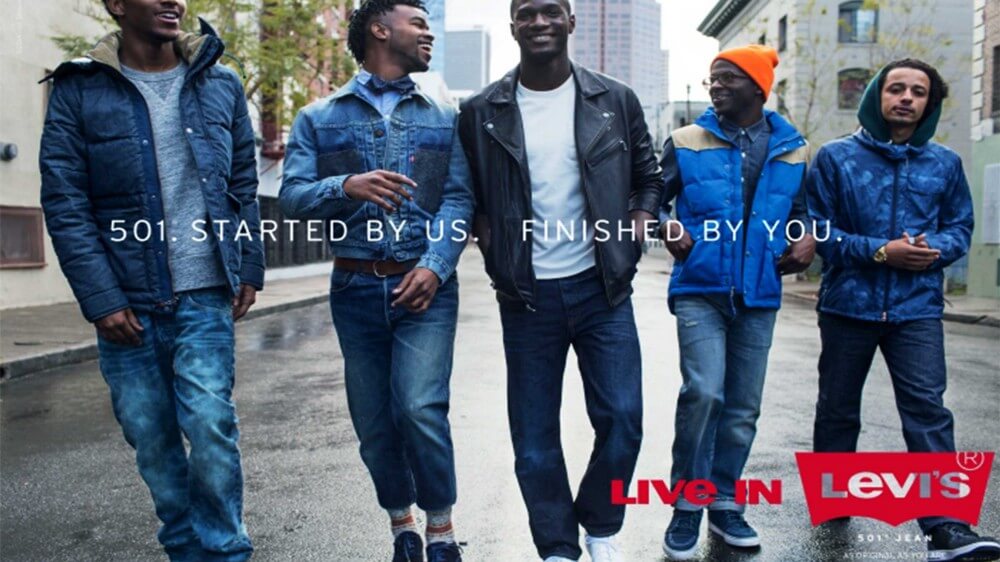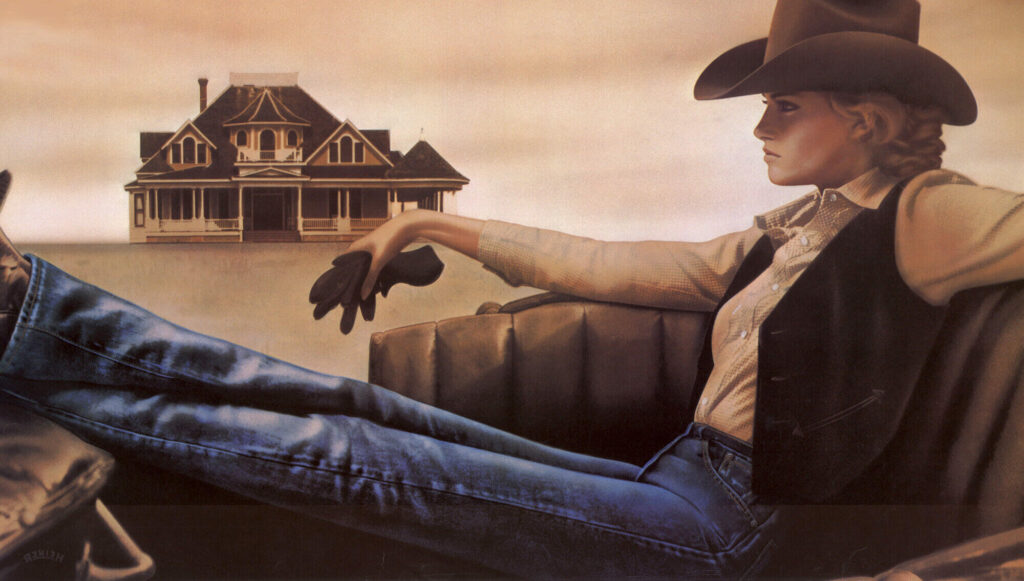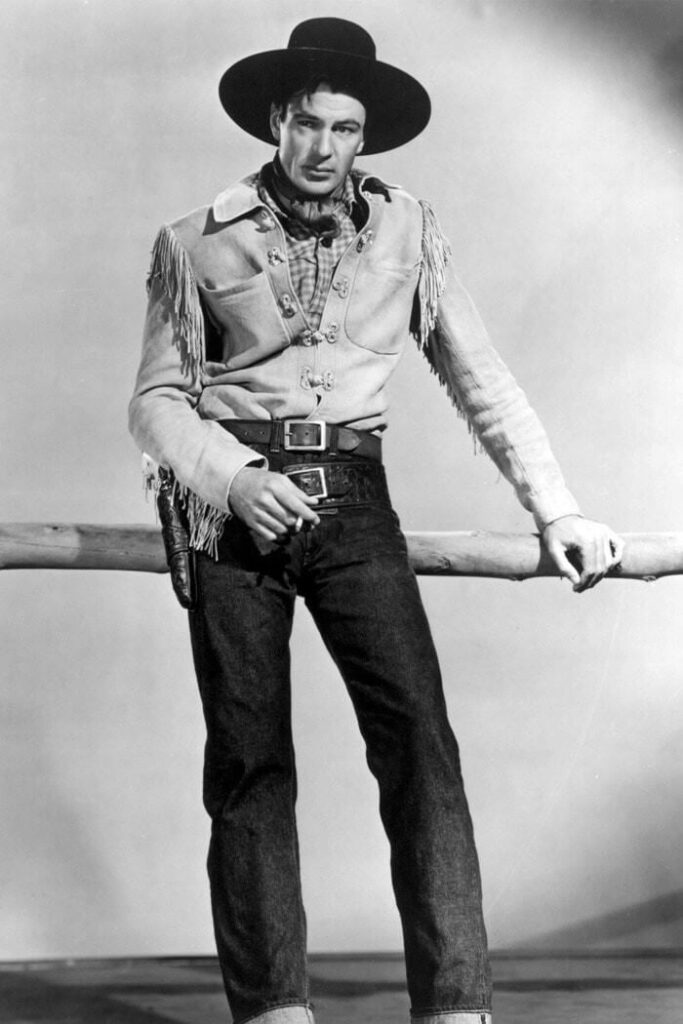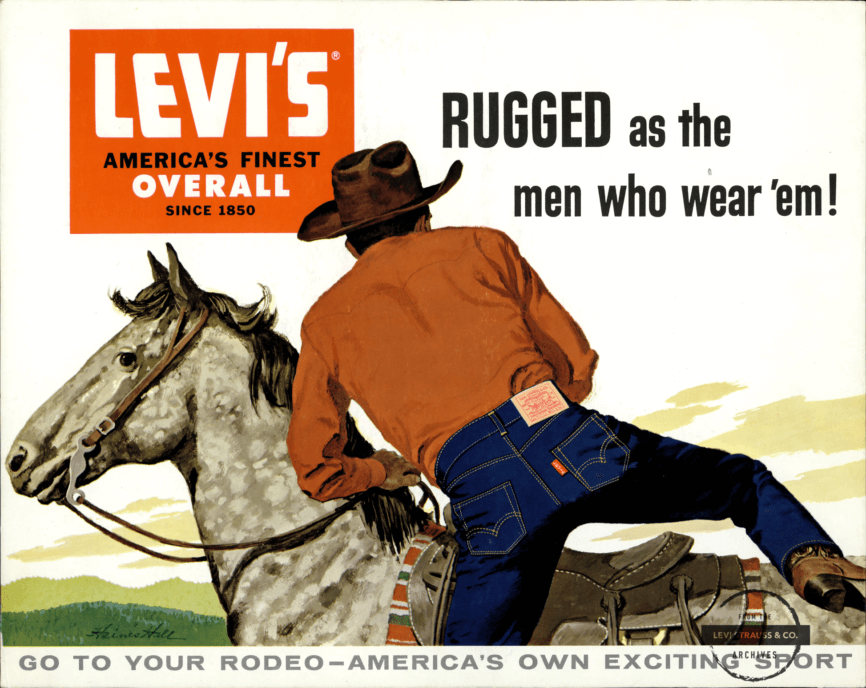From the rodeo to music festivals, the original — the Levi’s 501s — has seen a lot of action. It has created unique stories for different people across the world. Here I cover the thrilling story of this classic.
Imagine every rebel ever that graced the silver screen. Sure, they wear a leather jacket, but what about the lowers? Every cowboy, rock-and-roller has adorned the iconic blue jeans. Except very few can claim that they invented them. After all, It started with the Levi’s 501s.
Table of Contents

In a world of fast fashion, jeans have become consumables too. Although, if you pay good money, then you can get a pair of classics that last you a lifetime. In fact, I have a 20-year-old pair of my dad’s Levi’s 505 or the original dad jeans.
So, who makes the longest-lasting blue jeans?
Well, that question might be up for heated debate. One thing cannot be denied Levi’s was the first to rivet denim and change workwear forever. Also, they haven’t lost relevance yet.
Some of the appeal blue jeans have lies in their robustness. But the style has undergone an entire revolution. That’s why the rebellious — cowboys and rockers — sported jeans.
Even Japanese biker gangs appreciate the coolness of Levi’s, which is why there is Japanese denim, and many of them collect vintage Levi’s 501s.
Back in the day, Levi’s’ target consumer was the everyday coal miner in the 19th century. They looked something like this…
Okay, these are lumberjacks. But you get the point, right?
Levi’s is approaching its 150th anniversary next year in 2023. They have come a long way since the year 1890 when they first started allotting numbers to jeans. Now, everyone from miners to models is wearing Levi’s Originals.
Let’s explore what caused this shift. In other words, how Levi’s 501s changed denim for good.
Functional Wardrobe: The Origins of Blue Gold
During the gold rush, miners needed tough pants for performing their grueling activities. That’s when a German immigrant named Levi Strauss moved to San Francisco in 1853 to strike gold.
The brand had humble beginnings. In the early days, Levi’s sold shovels, picks, lanterns, pots and pans, shoes, long johns, shirts, and dungarees. In short, Levi’s started as a wholesale goods store.
So, where did the jeans come from?
Well, a client of his, Jacob W. Davis would purchase denim fabric from him. He would use it to make durable tents, horse blankets, and other things. Soon, a female client commissioned Mr. Davis to make denim workwear.
In 1872, Levi’s received the following letter from Davis, who stated forth his idea:
Dear Mr Strauss,
Today one of my female clients came in today to my shop complaining the area around the pockets on your dungarees are not sturdy enough. Dungarees that my client’s husband keeps his gold digging tools in. At that precise moment I was attaching leather straps on a horse blanket using brass rivets and it gave me an idea……
Davis decided to add metal rivets but Levi’s fabric was integral to the project. They embarked on a mutually-beneficial partnership which led them to file a patent. In 1873, they filed a patent for adding rivets to the sections of pants that would come under stress.
In 1890, Levi’s manufactured its first pair of jeans. While allotting every pair of jeans, numbers, the ones with the signature rivets received the number, 501.
However, a fire broke out in 1906 due to which it is still unknown why the number “5” was given to these core products.
It wasn’t just miners that needed them — farmers and laborers, too. Now the Levi’s 501 Original Fit was becoming emblematic of the working class rigor. Still, it was a pair of sturdy, blue trousers at the time. Not the cult symbol we know now.
Story Behind Key Details
So, much of the branding for the 501 jeans have continued from the olden days. Let’s look at some of its recognizable aspects of it…
Wondering why there are buttons and no zips?
The Levi’s 501 Original Fit came out on May 20, 1873, along with the filing of the patent. But “Button Your Fly” became the norm because the zipper was invented 20 years later. So, a pair of 501 jeans is a throwback to the glorious past. Nonetheless, buttons have better longevity than a regular zipper.
So, what’s the story behind the two horses?
The brand’s patent was about to expire in 1890. So, Levi’s came up with an innovative concept. By sewing a leather patch with two horses pulling apart a pair of jeans, they could showcase the garment’s durability and quality.
Also, most of Levi’s clients in the day were cowboys, farmers, and workers. Since they were unable to read nor write, this branding of course helped put the point across. When they would order a pair, they would ask for the pair with two horses.
What’s the deal with the small pocket?
That is known as the “coin” pocket. It was originally used by lumberjacks and miners as a place for keeping their pocket watches. Soon, it became a place to fit the iPod. Honestly, there are so many things to do with this fashion relic.
Wild Wild West: 501 Jeans and the Old Rodeo
One could say that classics are a product of utility and comfort. Yet, despite its status as a classic, it has gone through twenty makeovers. With each time Levi’s has tried to fit in with its ever-evolving consumer.
Modern jeans came into fashion in the 20s. However, even then sales were confined to the working class — cowboys, lumberjacks, and railroad workers. In the 30s, Western films took over and stylized jeans.
Classics are a product of utility and comfort.
In 1939, the movie Stagecoach starring John Wayne as Ringo Kid cemented the actor as a celebrity icon. Part of the look was the 501 which also shot to fame.
Then, Gary Cooper went on to wear the classic denims in both The Cowboy and The Lady and The Westerner. The rugged style of cinema’s front-men captivated American audiences.
After WW2, Levi’s completely changed its product. The workwear features were stripped off. Now their denim had become more streamlined. Naturally, the Western aesthetic also began to fade.
While Levi’s capitalized on the Western look well through the 50s. The brand kept up with the Western aesthetic until the popularity of the jeans spread to New York and Connecticut after WW2. During this time, women’s pants were still mostly unaccepted.
After WW2, denim clothing started receiving more acceptance. In 1948, Levi’s discontinued their wholesale business and focused entirely on apparel. Jeans now were widely worn by college students, hippies, and anyone else who identified as part of the counter-culture movement.
Now, Levi’s was gaining momentum.
Levi’s 501s and the Counter-Culture
Jeans now seem commonplace but at one time, they were at the heart of controversy. They were infamously banned in many schools during the 1950s, leading to the infamous ad campaign known as “Right for School.”
This is of course because jeans were associated closely with bad boys and no-do-gooders. So, school boards around the country were reeling on whether denims were acceptable attire or not.
The image was cemented mostly because of Marlon Brando’s famed Schott leather jacket and Levi’s 501 Original Fit Jeans get-up in The Wild One. Here’s the bad boy look…
What’s more, Hollywood successfully influenced the minds of impressionable young lads. Now they badly wanted to sport a pair in school to impress their girlfriends. Their teachers weren’t so impressed.
In fact, a woman from Hillsdale, New Jersey sent a letter to Levi’s admonishing them for their “poor taste.” Read it here. Many thought denim was inappropriate for school. Surprised, right?
In the 1960s, two things were in full force — the counter-cultural movement and Levi’s — which altered fashion completely. By this time, denim had become the uniform for hippies, activists, and musicians. You could witness acid-washed, ripped, or bell bottoms everywhere on the street.
Jeans made their way into college campuses and school classrooms too. Now the young minds of tomorrow were on the brand’s side. This proved too much for the White House to ignore. So, in 1962, JFK awarded Levi’s, the “E” award for significant contributions to the country’s export program.
Legacy of Levi’s 501s: Weathering the Storm
A pair of 501s are relatively inexpensive. They retail for a standard price of $69. While you pay a little extra, you save a lot thanks to its versatility. With straight-cut jeans, you can’t go wrong.
But Levi’s didn’t have a 501 jeans for women. This was the case until 1981 when Levi’s released a 501 jeans cut for women. It was marketed with the famous ad of Farrah Fawcett recreating a James Dean scene from his final film Giant.

Now not just every man but every woman wanted a pair of Levi’s 501s. Above is a famous photo shot by Peter Lindbergh for British Vogue with Cindy Crawford, Linda Evangelista, Naomi Campbell, Tatjana Patitz, and Christy Turlington on the cover.
The brand struggled during the 1980s as it missed out on key fashion trends. Calvin Klein and Jordache secured consumers that Levi’s had retained for so long.
Their pants had sex appeal, and consumers paid twice as much for them.
To add to that, Levi’s’ top competitors in the American classic jean market — Lee and Wrangler — came under VF Corporation. Levi’s revenue plunged by 78% in the first half of 1984.
Again in the 1990s, they missed out on the baggy jeans trend. Later in the 2000s, the brand kept losing out on revenue to J.C. Penney and GAP who catered to the trend of hip-hugging jeans and ate into their sales.
Many argue that Levi’s isn’t worried about sticking with youth trends. The brand is willing to weather the storm, and it focuses on its core products and consumer.
That being said when the time came to start outsourcing. Levi’s had second thoughts. After all, they prided themselves on being an all-American brand.
But, with outsourcing, Levi’s could significantly reduce the prices of its jeans, and secure a competitive position in the market. Already, brands like Diesel had started slashing prices by shifting to other countries.
By the mid-2000s, Levi’s was struggling with issues of debt, quality, and sluggish sales.
In 2011, with CEO, Chip Bergh, Levi’s focused on core products such as the men’s Levi’s 501s, and they enriched weaker areas. One of these areas was women’s jeans. From 2015 to 2018, sales of women’s jeans increased by $200 million.
501 Jeans in Japan: Denim Culture
While Levi’s did struggle in America for a long time, one unlikely country has been a loyal fan — Japan.
Levi’s is highly popular in Japan. In particular, their enthusiasm lies in the Levi’s 501 Original Fit Jeans. In the 1950s, the rock and roll and Hollywood craze swept the nation. Also, the appearance of selvedge denim in The Wild One influenced them.
In many ways, it influenced their people to dress differently. From this sprouted a dressing sense called Japanese Americana. But, during those days, Japan did not have access to Levi’s.
As a result, many Americana fans would fly to the USA to bring pairs and pairs with them. Then, they would collect or distribute it. This is how Levi’s 501s made their way into mainstream Japanese culture.
Japanese collectors are some of the most knowledgeable people on the subject of classic jeans. This fascination was nourished by Japanese fashion magazines. The magazines would explain in detail the features of each 501.
Many Japanese people grew up in this culture of sourcing Levi’s and reinventing the style. They studied the American style and added something authentic to it. They call this style Ame-Kaji or American-casual.
Conclusion: My Review
It is interesting how you can wear vintage Levi’s jeans, and still look fresh. It looks like a garment meant for any era. But if you wear something else from the 1930s, you would fit in better at a costume party.
That’s the legacy of Levi’s 501s and the prime reason why Levi’s is still relevant for generations to come. The classic jeans brand focuses on function, fashion, and purpose. But what sets them apart is that they don’t try to reinvent the wheel.
Anyone can enjoy a pair of 501s. It is robust and rich in history, and it fits all body shapes. These straight-cut jeans are comfortable and timeless and are perfect for every occasion. I have a pair which I will put on right now.





